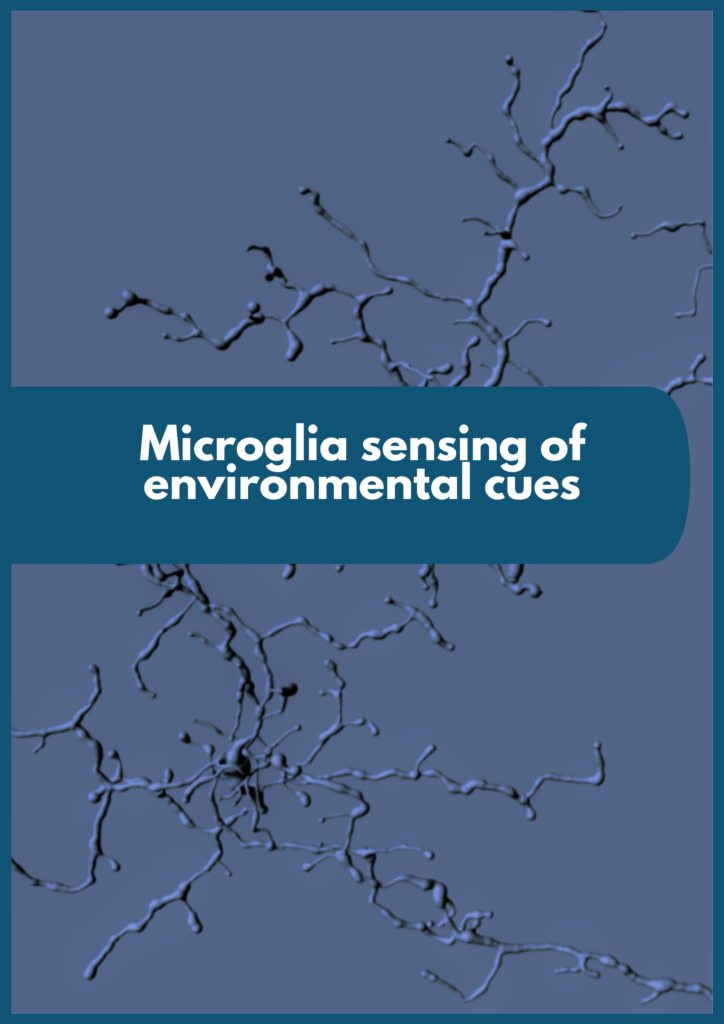
Last updated: Oct 2024
Microglia sensing of environmental cues
Microglia sense and execute their function through a highly diverse receptor repertoire. So far, microglia-targeted interventions are limited to a few mouse models, which allow microglia-tagging within the brain parenchyma using, for example, the chemokine receptor Cx3cr1. My microglial retinal transcriptome atlas has become a valuable resource for discovering alternative microglia-enriched candidate genes and receptors like the mitochondria gene Ucp2, several G protein-coupled receptors (GPCRs) such as GPR65, GPR84, GPR109a, and GPR183, but also genes encoding for the prostaglandin-endoperoxide synthase 1 (Ptgs1/Cox1), which synthesizes prostaglandins from arachidonic acid and plays a crucial role in modulating inflammatory responses.
From mouse...
This paper proves the feasibility of generating chemically-inducible orphan GPCRs based on DREADD and confirmed the expected replication of the canonical and non-canonical signaling pathways including the inflammatory and migratory response in microglia.
Chimeric GPCRs mimic distinct signaling pathways and modulate microglia responses
Initially, we used the ONC model to simultaneously study the microglia response of the retinal ganglion cells (RGC) in the injury- versus the inflammatory-induced, contralateral eye. Indeed, we confirmed in the ONC contralateral eye a short-term microglia reactivity. However, we could not verify the previously reported RGC loss (92–94). We used a combination of available analysis tools like RGCode (95) and developed our own RGC-Quant deep-learning-based tool (see 1.1.1), as well as different mouse models, sex, and stainings to detect RGCs. This suggests that the previously reported data might have suffered from inadequate sampling.
Optic nerve crush does not induce retinal ganglion cell loss in the contralateral eye
(Schoot Uiterkamp et al. submitted).
To human..
Differences between human and murine microglia have been indicated. Therefore, we implemented human-induced pluripotent stem cell (hIPSC) differentiation protocols in our research line to generate distinct cell type populations or cell complexes.
This paper outlines regular occurrence of high numbers of microglia in unguided retinal organoid differentiation protocols, however they preferentially localize in co-developing mesenchymal-rich regions, which develop blood-vessel epithelium, and is a so far overlooked compartment in retinal organoid analysis. Even in high numbers, microglia prevent their infiltration into the neuroectodermal niche suggesting distinct signaling signatures recruiting microglia to the mesenchyme.
A systematic characterization of microglia-like cell occurrence during retinal organoid differentiation
(Bartalska, Hübschmann, Korkut-Demirbas, et al. 2022, iScience).
This protocol describes a detailed step-by-step method pipeline on the characterization of hIPSC-derived microglia.
Assessing in vitro microglia identity and function by immunostaining, phagocytosis, calcium activity, and inflammation assay
This paper compares the consequences of the
viral-stimulant poly(I:C) in retinal organoids with and without microglia leading to microglia-dependent potent and selective inflammatory signature and neuronal proliferation phenotype. Microglia integration is critical for organoid maturation, particularly in drug screening and safety evaluations, because only in the presence of microglia the non-steroidal anti-inflammatory drug (NSAID) ibuprofen restored poly(I:C)-mediated effects on neuronal calcium dynamics.
Microglia determine an immune-challenged environment and facilitate ibuprofen action in human retinal organoids
(Schmied et al. submitted).
On-going:
- Resolve the migration profile of hIPSCs-derived microglia precursors.
- Consequences of cyclooxygenase-1 (Ptgs1) manipulation in microglia.